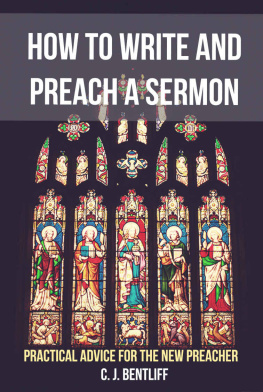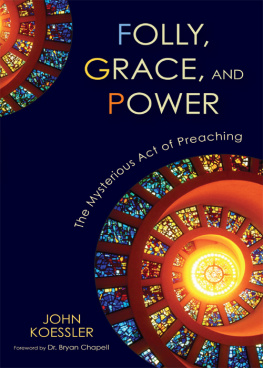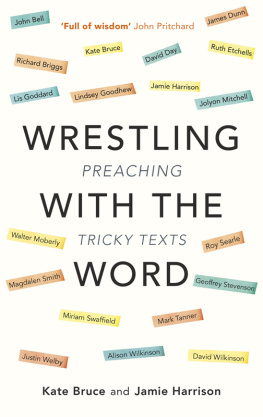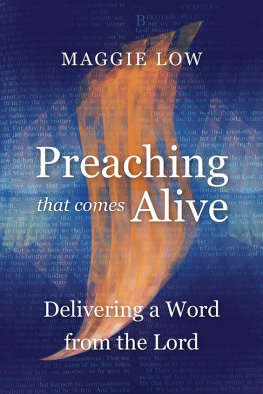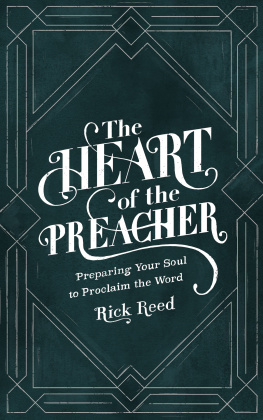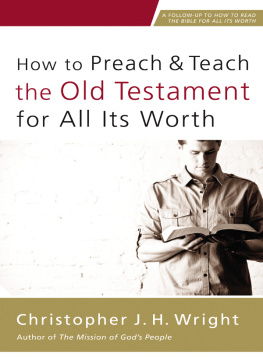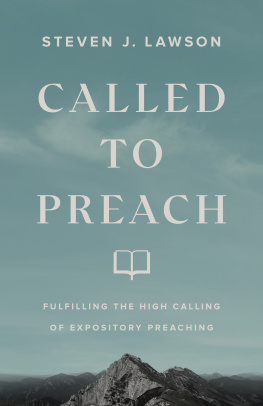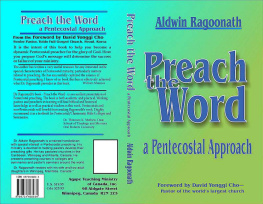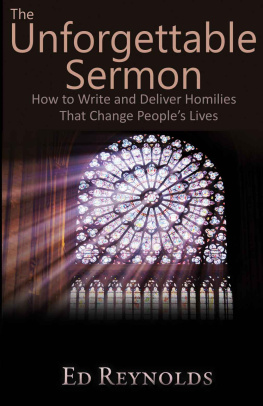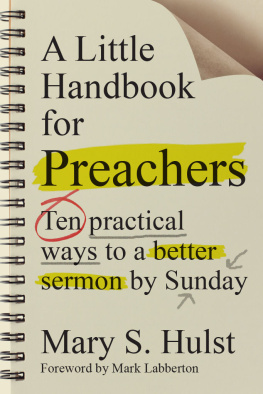*This page has been left intentionally blank*
How to Write and Preach a Sermon
Practical advice for the new preacher
Written and edited by C. J. Bentliff
Copyright Christopher Jordan Bentliff, 2015.
The moral right of the author has been asserted.
All Rights Reserved. No part of this publication may be reproduced, stored electronically or transmitted, in any form or by any means, without prior written permission from the author.
Cover art Rebecca Bentliff Photography, 2015. All rights reserved.
I would like to thank everybody at Mattersey Hall Bible College, staff and students. Through your amazing support and knowledge I have grown in understanding and faith. I thank you all for your continued love and fellowship. You are my family in Christ without whom I would not be the person that I am today.
A very brief foreword
I have tried my best where possible to use gender-neutral names and pronouns, except for occasions when specific real life examples are being used. I do this by preferring to use they and them pronouns instead of she or he pronouns. This has routes in classical literature up to and including (though not limited to) Chaucer (e.g. the Pardoner's prologue), Shakespeare (e.g. Hamlet), Jane Austin (e.g. Mansfield Park) and dozens of other respected classical pieces. I do this because I do not want to seem exclusive of people or to encourage a view that is exclusive of gender identity.
Any bible references I use, I have looked up in the NRSV (New Revised Standard Version) as this is my preferred translation.
Contents Page
Hey there! So you've bought How to write and preach a sermon and it's my job to give you all the skills and knowledge that you need in order to preach like you have never preached before! I'm going to try and help you do this in a fun and accessible way in order to help as many people bring the word of God to their congregation as possible. In essence, that's what preaching is all about. There may not be a right or wrong way to preach, but it's a simple fact that when we're talking about the Bible, we want what we teach to have an effect . All of that can mean making what you have to say more accessible .
Why read this book?
Before I start, let me just give you a very brief overview of my ministry and what you'll get out of this book. My name is Jordan and I'm a firm follower of Christ; though I have spent quite a few years in different church leadership contexts, I have also just finished an extensive course on preaching from the Bible. I'm fairly young, but I've taught the Bible through sermons more times than I can remember. My age also means I'm used to bringing the word of God in both very contemporary settings amongst my peer group and more traditional settings when with older congregations. I come from a very varied Church background, spending some time working within the Church of England, some with Vineyard offshoots and a lot of time at the moment working within Assemblies of God.
One thing I should mention here is that what you are not about to get out of this book is any sort of deep theology . There is a vast array of experts out there that you really need to read if you want to talk about the Bible from a point of authority. Not reading on a subject you're teaching about is unacceptable in schools and colleges, so why should it be acceptable in talking about scripture? In other words, this book will help you with the practical side of writing and preaching a sermon as if you had never preached in your life. It will give you great frameworks and tips on how to make the message you have to bring really shine .
What are we going to talk about?
I've divided this book into four main sections to make the book easier to read:
- How to build your sermon
- How to present your sermon
- How to make your sermon stick
- Inspiration
I suppose a better way of looking at these four sections would be like looking at putting together a window. First we'll look at the framework, then we'll fill it in and then we'll polish what we have and find somewhere for it to go!
This brings me to a question - how much time have you spent so far thinking about the structure of your sermons? It's easy enough to speak out a word that you feel God has given you, but the mistake that most preachers make is simply that they don't think seriously about s tructuring what they're going to say! Let's look at an example
Case and point
Chris is about to give a gospel message to a youth group. The message is simply that God loves them, told through the parable of the good shepherd (John 10:1-21) . Chris begins without thinking about structure and says:
"You are a sheep. The good shepherd represents the Lord. The good shepherd went off to find the lost sheep. A sheep went missing from the flock let me tell you about the parable of the good shepherd! You are a sheep God loves you and will look for you no matter what. "
Okay, so that might seem a little bit extreme but you'd be surprised at some of the things I've seen (especially in myself when I first set out). Regardless, I'm sure you get the point - they could have laid out their statement in a far more appealing way if they had only stopped and thought about what they were going to say !
Perhaps a better layout of Chris's simple statement would have been:
"Let me tell you about the parable of the good shepherd! A sheep went missing from the flock but the good shepherd went off to find the lost sheep. The good shepherd represents the Lord and you are the lost sheep. God loves you and will look for you no matter what!"
This way, the statement flows in a much smoother way. It makes a lot more sense and has been polished that little bit extra to make it a much more accessible message.
This is a very small-scale version of what this book is about. Though I doubt you would be as unprepared as Chris, you may well (unknowingly) be missing out on several easy to learn skills as far as presenting the word of God in an understandable format is concerned.
I will not be giving you any sermons that you can just recite off - rather I will help you take the sermons you have and make them far more appealing to your congregation, and then point you in the direction of some great material to read for inspiration.
Preparation
As we saw in Chris's statement, writing a good sermon means you need to be prepared. You need to know where things are going. You need to make sure your props are ready off-stage or that the video you're about to play isn't dubbed in a foreign language. It may sound painfully obvious but preparation is key!
The first chapter of this book is all about the frame within which you should prepare your notes or your thoughts. First, let me just say one final thing about being prepared!
You may have heard it said that in the Kingdom of God you can never be prepared. Well, this is partly true. In the Kingdom of God you must always be prepared for God to do something you have not prepared for. This might sound confusing but what it really means is, if you do have a decent set of notes for your sermon and suddenly, halfway through the meeting you feel like God is really calling you to talk about something else, you still have a safety net.
It has actually happened to me! I had been prepared to give a word but just before I stood up I found out that a member of the congregation had sadly become seriously unwell. I knew that I had to say something about it so I did. I finished talking about the sad event after about ten minutes and found myself with some time to fill. Luckily however, I had planned my sermon in such a way that it was very easy to adapt it to a much shorter version of itself so that the message still came across. This meant I was able to address both situations (the serious illness of a member of the congregation and that to which the sermon was addressed) effectively, through decent preparation.
Next page
